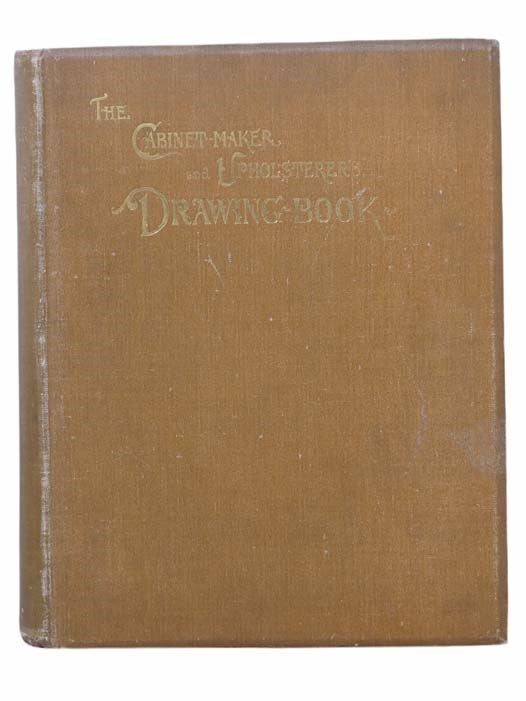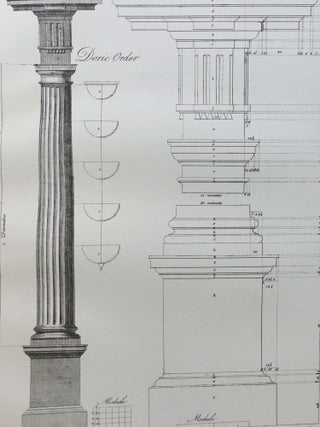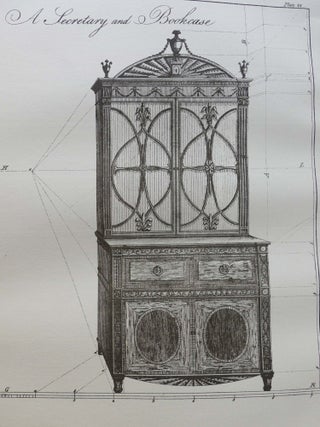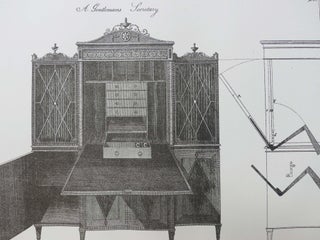The Cabinet-Maker and Upholsterer's Drawing-Book, Complete with 'Appendix' and 'Accompaniment' and All the Plates
London: Gibbings and Company, Ltd., 1895. Facsimile. Large Hardcover. Very Good / No Jacket. Item #2303684
1895 facsimile of the 1802 third edition. Hinges weakening, interior clean and unmarked.
xv, 440 pp. Imperial 8vo. 9 1/2 x 11 5/8. Light brown cloth, gilt titles, top edge gilt. Includes 62 plates in text, 33 plates in appendix, 8 additional plates added for the second edition, and 14 plates in the accompaniment (117 total). The classic work by one of the 'big three' 18th century furniture makers (the others were Thomas Chippendale and George Hepplewhite). This work, first published in 1791 in four volumes, attracted hundreds of subscribers, and was immediately influential throughout England, and his design style remained fashionable through the first quarter of the 19th century. "Thomas Sheraton, (born 1751, Stockton-on-Tees, Durham, Eng.—died Oct. 22, 1806, Soho, London), English cabinetmaker and one of the leading exponents of Neoclassicism. Sheraton gave his name to a style of furniture characterized by a feminine refinement of late Georgian styles and became the most powerful source of inspiration behind the furniture of the late 18th century. His four-part Cabinet-Maker and Upholsterers’ Drawing Book greatly influenced English and American design. Sheraton was apprenticed to a cabinetmaker, but he became better known as an inventor, artist, mystic, and religious controversialist. Initially he wrote on theological subjects, describing himself as a 'mechanic, one who never had the advantage of collegiate or academical education.' He settled in London c. 1790, and his trade card gave his address as Wardour Street, Soho, where he 'teaches perspective, architecture and ornaments, makes designs for cabinet-makers, sells all kinds of drawing-books.'" (Encyclopedia Britannica)
Price: $250.00




